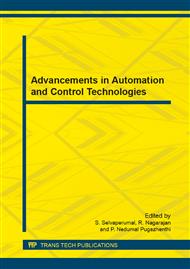p.661
p.668
p.673
p.679
p.684
p.690
p.696
p.702
p.708
Hybrid Evolutionary Particle Swarm Optimization for the Coordination of Wind and Thermal Generation Dispatch
Abstract:
Development of better wind and thermal coordination dispatch is necessary to determine the optimal dispatch scheme that can integrate wind power reliably and efficiently. In this paper hybrid Evolutionary Programming (EP) and Particle Swarm Optimization (PSO) approach is utilized to coordinate the wind and thermal generation dispatch and to minimize the total production cost considering wind power generation and valve effect of thermal units. Numerical studies have been performed for three different test systems, i.e., six, thirteen and forty generating unit systems. The simulation results demonstrate the effectiveness of the proposed approach and shows the effect of wind power generation in reducing the total fuel.
Info:
Periodical:
Pages:
684-689
Citation:
Online since:
June 2014
Authors:
Price:
Сopyright:
© 2014 Trans Tech Publications Ltd. All Rights Reserved
Share:
Citation:


